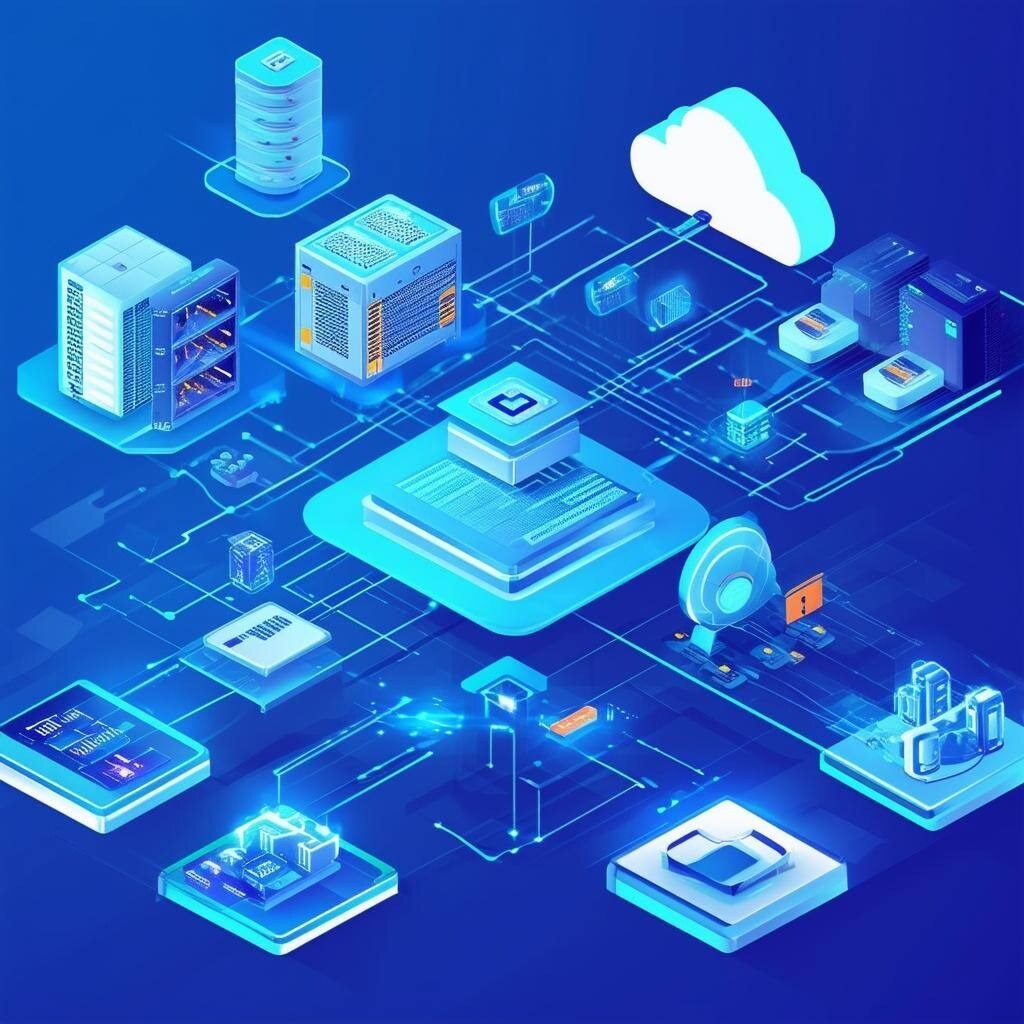How to Supercharge Your IT Infrastructure for Maximum Efficiency!
In today’s competitive business landscape, the efficiency of your IT infrastructure can be a decisive factor in achieving organizational success. A...
4 min read
![]() Totalcare IT
:
Dec 6, 2024 10:00:00 AM
Totalcare IT
:
Dec 6, 2024 10:00:00 AM
As businesses continue to evolve in the digital world, updating your IT infrastructure has become essential. Outdated systems can limit growth, expose security risks, and make operations inefficient. This guide is designed to help business leaders understand the key steps to migrating to modern IT infrastructure and ensure a smooth, successful transition that aligns with your business goals.
Many organizations still rely on old IT infrastructure, which can cause several issues:
- Slow Performance: Older systems struggle to handle the demands of modern software and applications, resulting in sluggish performance.
- Security Risks: Outdated systems may not have the latest security features, increasing vulnerability to cyberattacks.
- Difficulty Scaling: As businesses grow, it becomes harder and more expensive to expand outdated infrastructure.
Upgrading to a modern IT infrastructure brings numerous advantages:
- Better Performance: Modern systems are built to handle larger workloads and deliver faster results.
- Easier Scalability: Cloud-based solutions and virtualization make it easier to expand as your business grows.
- Improved Security: Newer systems come with better security features, protecting against cyber threats.
- Future-Ready Technology: Modern IT setups support emerging technologies like artificial intelligence (AI), the Internet of Things (IoT), and more.
Before making any changes, take a good look at your existing IT infrastructure:
- Inventory Your Assets: Make a list of all your hardware, software, and applications.
- Evaluate Performance: Understand how well your current systems are performing and where they fall short.
- Identify Dependencies: Recognize how different systems and applications rely on each other.
Set clear goals for your migration. These could include:
- Reducing Costs: Streamlining operations to lower IT expenses.
- Improving Performance: Enhancing system speed and reliability.
- Increasing Flexibility: Making it easier to adapt to changes in the market.
A solid roadmap is key to a successful migration:
- Set Timelines: Establish a timeline with key milestones.
- Allocate Resources: Determine the budget and resources needed.
- Plan for Risks: Identify potential risks and create a strategy to mitigate them.
Cloud computing has become a popular solution for modernizing IT. There are three main types:
- Public Cloud: A cost-effective, scalable option where resources are shared with others.
- Private Cloud: Dedicated infrastructure for your company, offering more control and security.
- Hybrid Cloud: A mix of public and private cloud, giving you the best of both worlds.
Virtualization allows you to run multiple virtual systems on a single physical server, helping reduce hardware costs and improve efficiency. It includes:
- Server Virtualization: Consolidating servers to reduce physical hardware needs.
- Storage Virtualization: Pooling storage resources for more flexibility.
This type of infrastructure lets you manage hardware through software, improving flexibility and control. Key components include:
- Software-Defined Networking (SDN): Virtualizes network management.
- Software-Defined Storage (SDS): Virtualizes storage for better management.
Consider integrating cutting-edge technologies like:
- AI and Machine Learning: For better data analysis and decision-making.
- IoT (Internet of Things): To connect devices and gather valuable data.
Upgrading your IT systems involves several costs:
- Hardware and Software: The cost of new equipment, licenses, and subscriptions.
- Implementation: The cost to install and configure new systems.
A cost-benefit analysis helps you weigh the investment against long-term gains, such as:
- Efficiency Gains: Saving money through more efficient systems and reduced maintenance costs.
- Scalability: The ability to grow without incurring excessive costs.
To manage costs, consider:
- Phased Migration: Implementing changes step-by-step to spread out expenses.
- Vendor Negotiations: Negotiating with vendors for the best prices.
A successful migration requires a skilled team:
- Project Manager: Oversees the entire process and ensures the project stays on track.
- IT Staff: Handles technical tasks like system setup and configuration.
- External Consultants: Bring in specialized expertise for more complex tasks.
Your team should have skills in:
- Technical Expertise: Knowledge of modern IT solutions and systems.
- Project Management: Ability to handle timelines, resources, and risk.
Ensure your team is trained in new technologies:
- Prepare Staff: Help your team get up to speed on the new systems.
- Smooth Transition: Minimize disruptions by ensuring employees know how to use the new tools effectively.
Before fully migrating, run pilot tests to:
- Test the Migration Approach: Make sure your strategies work and identify potential issues.
- Check Compatibility: Ensure the new system works well with existing applications.
A phased approach lets you:
- Minimize Disruptions: Transition systems gradually to avoid downtime.
- Handle Issues: Address problems in smaller sections before full implementation.
When moving data, focus on:
- Data Integrity: Ensuring the data remains accurate and consistent during the transfer.
- System Integration: Making sure the new systems integrate smoothly with old ones.
Keep everyone informed by:
- Updating Stakeholders: Regularly share progress and key milestones.
- Addressing Concerns: Respond promptly to any questions or issues.
Offer support to help users adjust to the new systems:
- Ease the Transition: Train staff on new tools to help them adapt.
- Boost Productivity: Ensure everyone is comfortable using the new systems to maintain productivity.
People often resist change, but you can address this by:
- Involving Stakeholders Early: Get key decision-makers involved early to help secure buy-in.
- Providing Support: Offer plenty of resources and assistance to smooth the transition.
Once the migration is complete, keep track of how the new systems are performing:
- Track Key Metrics: Monitor system speed, availability, and usage.
- Identify Problems Early: Spot issues before they cause major disruptions.
Regularly review your IT infrastructure to:
- Increase Efficiency: Make adjustments to improve performance.
- Stay Agile: Adapt your systems as your business needs evolve.
Collect feedback from users to:
- Improve Experience: Address any pain points users encounter.
- Enhance Performance: Fine-tune systems for better overall performance.
Migrating to modern IT infrastructure involves careful planning, selecting the right technologies, managing costs, and building the right team. By following these steps, you can enhance performance, scalability, and security, positioning your business for future growth.
A well-executed migration to modern IT infrastructure is an investment in your company's future. Plan carefully, execute strategically, and remain adaptable to ensure long-term success.
For personalized advice and help with your migration, consider consulting IT experts. They can guide you through the process, ensuring a smooth transition and continued success.

In today’s competitive business landscape, the efficiency of your IT infrastructure can be a decisive factor in achieving organizational success. A...

Digital transformation is more than just industry jargon; it’s a vital strategy for growth and competitiveness. For the c-suite executives at small...

Managing IT infrastructure costs effectively is crucial for small to medium-sized businesses (SMBs) that want to stay competitive without breaking...